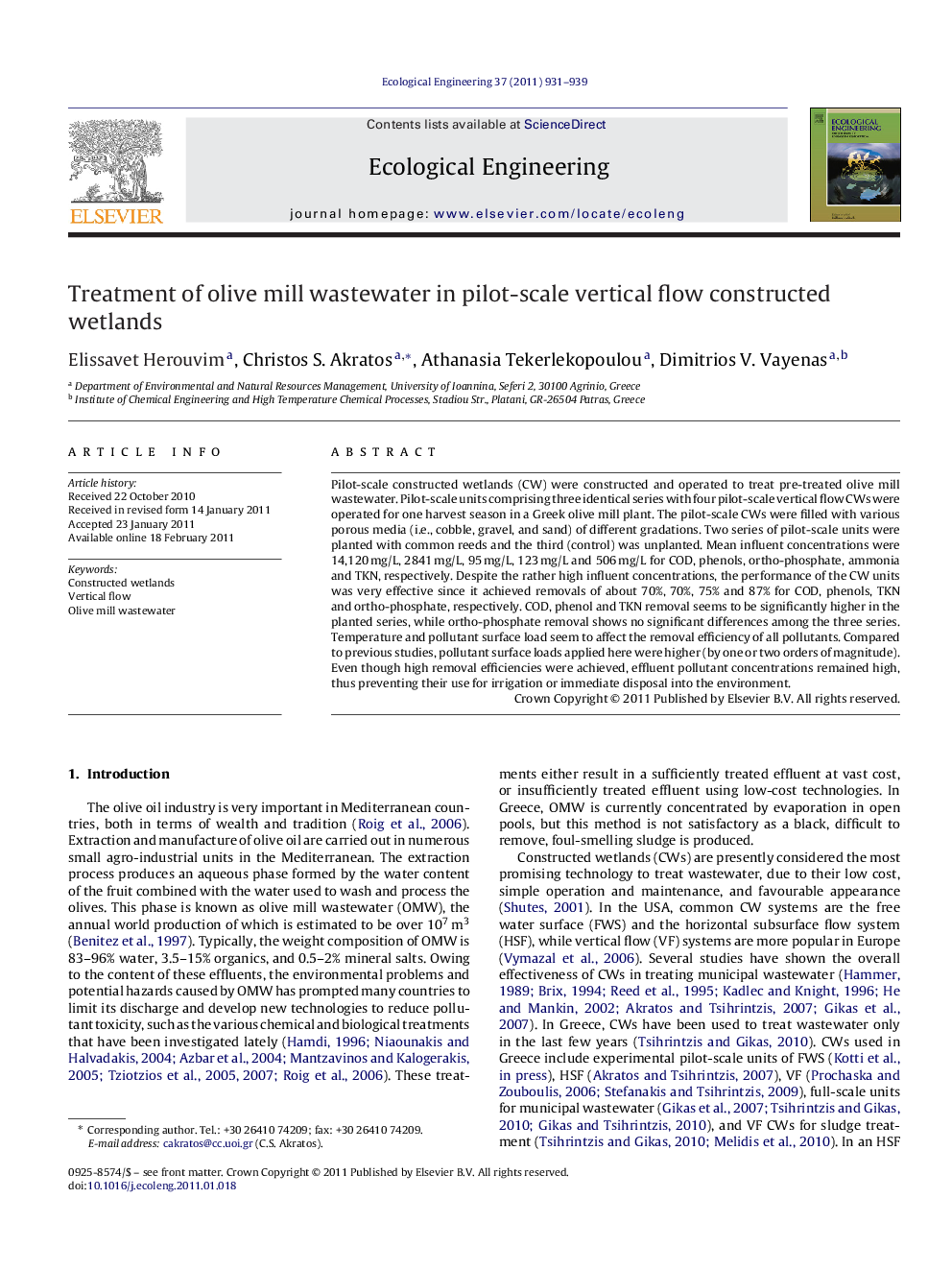| Article ID | Journal | Published Year | Pages | File Type |
|---|---|---|---|---|
| 4390324 | Ecological Engineering | 2011 | 9 Pages |
Pilot-scale constructed wetlands (CW) were constructed and operated to treat pre-treated olive mill wastewater. Pilot-scale units comprising three identical series with four pilot-scale vertical flow CWs were operated for one harvest season in a Greek olive mill plant. The pilot-scale CWs were filled with various porous media (i.e., cobble, gravel, and sand) of different gradations. Two series of pilot-scale units were planted with common reeds and the third (control) was unplanted. Mean influent concentrations were 14,120 mg/L, 2841 mg/L, 95 mg/L, 123 mg/L and 506 mg/L for COD, phenols, ortho-phosphate, ammonia and TKN, respectively. Despite the rather high influent concentrations, the performance of the CW units was very effective since it achieved removals of about 70%, 70%, 75% and 87% for COD, phenols, TKN and ortho-phosphate, respectively. COD, phenol and TKN removal seems to be significantly higher in the planted series, while ortho-phosphate removal shows no significant differences among the three series. Temperature and pollutant surface load seem to affect the removal efficiency of all pollutants. Compared to previous studies, pollutant surface loads applied here were higher (by one or two orders of magnitude). Even though high removal efficiencies were achieved, effluent pollutant concentrations remained high, thus preventing their use for irrigation or immediate disposal into the environment.
